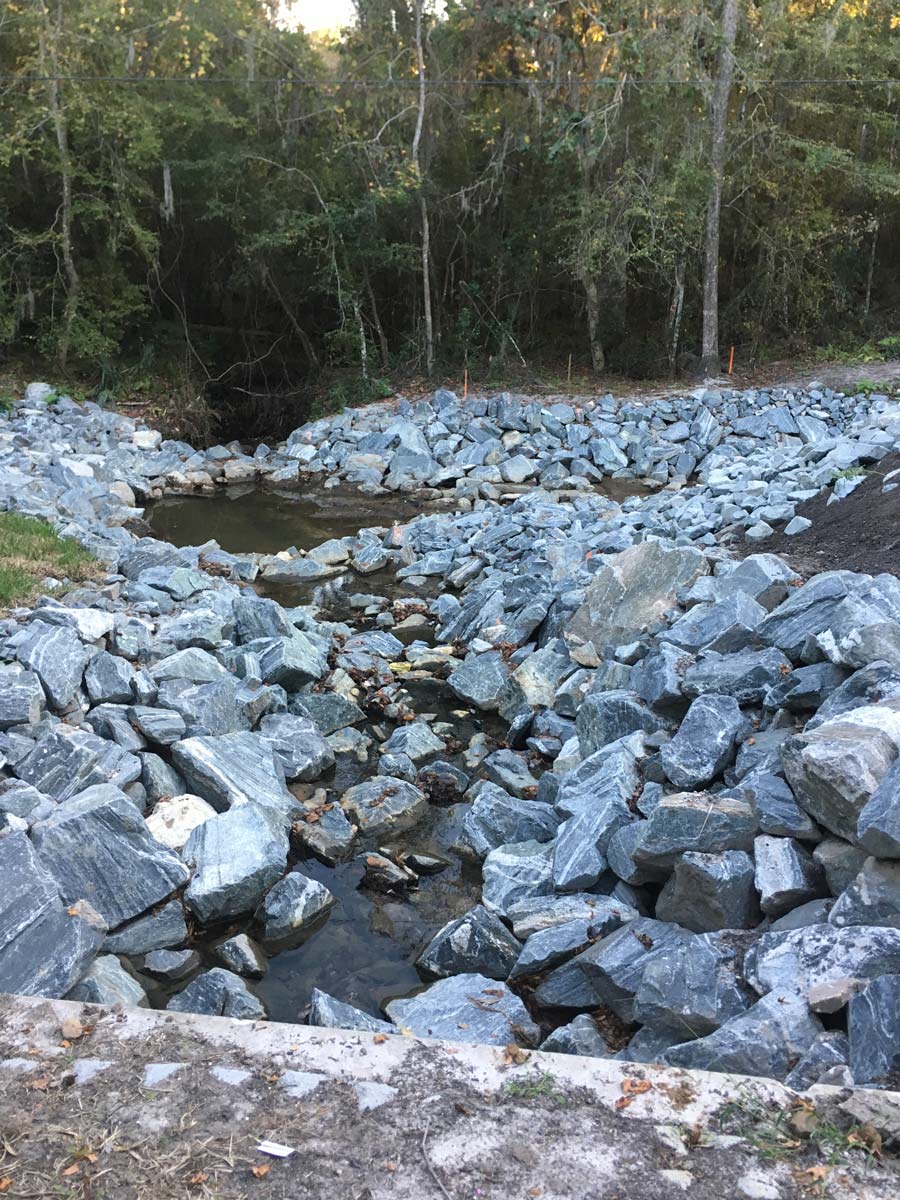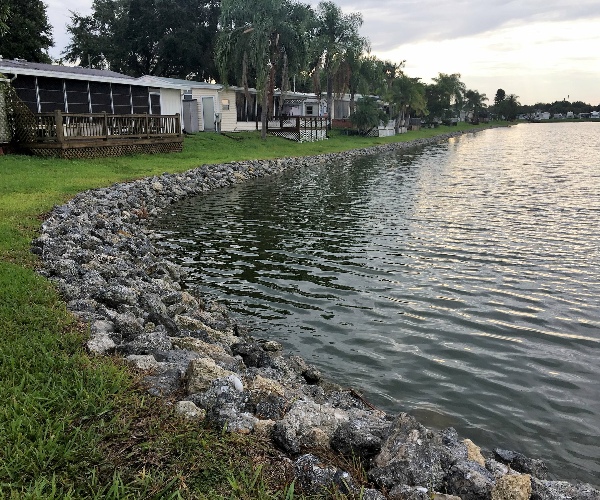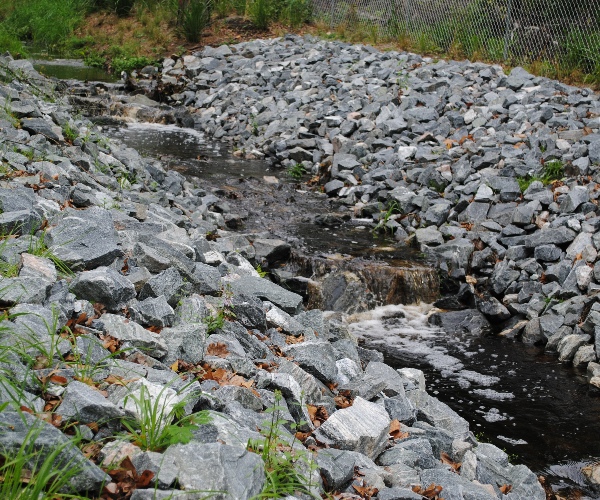Rock and cement riprap is a slope stabilization method using multiple rocks, normally made from limestone or granite that are loosely placed together to control erosion.
A good solution is typically clean fieldstone or quarry stone with a diameter of no less than 6 inches and no greater than 48 inches. RipRap installation takes specialized equipment and operators to position to ensure proper flow and shoreline protection. Landshore® often adds a porous liner underneath the riprap to prevent washouts and destabilization during flood or other high water events.
The primary purpose of riprap is that of a defense mechanism. The rocks absorb the impact of energy from water or waves by capturing or trapping water in the gaps between the rocks which allows for slow drainage. As a secondary measure, riprap is used behind or in front of old seawalls and bulkheads for added protection against wave and wind action and breakwater measures. Although labor intensive, riprap is a popular solution for erosion protection.
Various riprap construction applications include:
- Beachfront erosion
- Breakwater measures
- Bridge or dam abutments
- Creek erosion
- Pond embankment
- River embankment
- RipRap revetment wall
- RipRap seawall
- Shoreline erosion protection
- Scour Prevention
- Stepping pools to slow water velocity in creeks, streams, and rivers
- Waterfront Property
These two images reflect a unique creek project in Gainesville, FL, where RipRap was used to create flood pools to stabilize the side banks and slow down water velocity. The size of RipRap rocks are calculated based on velocity flow or wave action on a waterbody. This particular project was the first of its kind for a creek in Florida.



